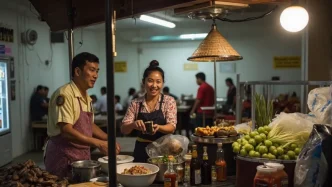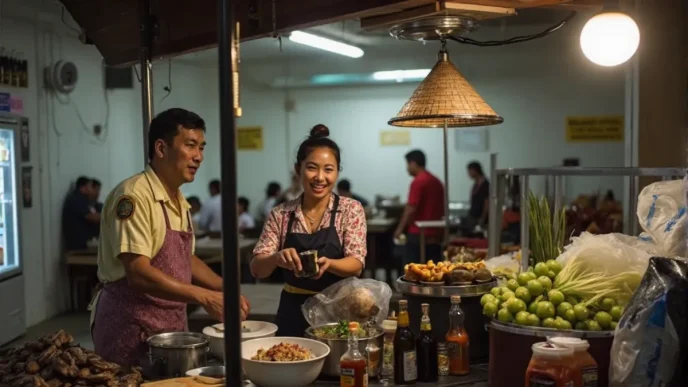In the bustling streets of Bangkok, amidst the golden spires of temples like Wat Saket, cultural nuances shape daily interactions in ways that often go unnoticed by visitors. One such concept, deeply embedded in Thai society, is kreng jai—a term with no direct English translation but one that encapsulates a blend of consideration, deference, and a reluctance to impose. More than mere politeness, kreng jai is a way of thinking, a subtle yet powerful force that governs social harmony in Thailand.
Unpacking the Meaning of Kreng Jai
At its core, kreng jai reflects a desire to avoid inconveniencing or embarrassing others. It is about preserving face—both one’s own and that of others—and maintaining a sense of balance in relationships. This can manifest in small, everyday actions: a Thai person might decline an offer of help, even if they need it, simply to avoid being a burden. They might smile and nod in agreement, even when they disagree, to prevent discomfort or conflict.
For those unfamiliar with Thai culture, such behavior can be perplexing. It might be mistaken for shyness, passivity, or even insincerity. But kreng jai is none of these. It is a profound form of respect, a way of navigating social interactions with an acute awareness of how one’s words and actions impact others. It prioritizes harmony over individual desires, often placing the needs of the group above personal gain.
Kreng Jai in Daily Life
Imagine a scenario in a Bangkok office: a colleague is offered a promotion but hesitates to accept, citing humility or a need to think it over. To a Western observer, this might seem like a lack of confidence. Yet, in the context of kreng jai, the hesitation could stem from a fear of appearing overly ambitious or causing envy among peers. Similarly, a friend might say “Don’t worry about it” when asked if they need assistance, not because they don’t appreciate the gesture, but because they don’t want to trouble anyone.
This mindset extends beyond personal interactions to public life. In a city as vibrant and crowded as Bangkok, where street vendors, tuk-tuk drivers, and tourists coexist in a delicate dance, kreng jai helps maintain civility. It’s why arguments are rare, even in frustrating situations like traffic jams, and why smiles often mask underlying tension. For Thais, avoiding confrontation is not a sign of weakness but a commitment to mutual respect.
Bridging Cultural Gaps
For foreigners, understanding kreng jai can be transformative. It offers a lens through which to interpret behaviors that might otherwise seem confusing. A declined invitation to dinner, for instance, might not be a rejection but a polite attempt to avoid imposition. Recognizing this, a visitor might gently insist or rephrase the offer to make it clear that it’s no trouble. Such sensitivity can build trust and foster deeper connections, turning casual encounters into meaningful exchanges.
Learning to “read between the lines” is key. When a Thai person says “It’s okay” or “No problem,” it’s worth pausing to consider whether they’re truly comfortable or simply being kreng jai. Responding with empathy—perhaps by offering reassurance or checking in discreetly—can show respect for their cultural values while strengthening the relationship.
A Reflection of Thai Values
Kreng jai is more than a social custom; it’s a reflection of broader Thai values rooted in Buddhism and community. The emphasis on harmony aligns with Buddhist teachings of compassion and mindfulness, encouraging individuals to consider the ripple effects of their actions. In a society where collectivism often trumps individualism, kreng jai serves as a glue that binds people together, smoothing over differences and fostering a sense of unity.
At Wat Saket, where the Phra Borom Banphot Chedi stands draped in red cloth as a symbol of devotion, these values are visually and spiritually palpable. The temple, perched on a hill in Bangkok’s old town, draws locals and tourists alike, each navigating the space with a quiet respect that mirrors kreng jai. Here, as elsewhere in Thailand, the unspoken rules of consideration shape interactions, creating an atmosphere of calm amid the city’s chaos.
Navigating Kreng Jai as a Visitor
For travelers and expatriates, embracing kreng jai can enhance their experience in Thailand. Simple gestures—like accepting a “no” gracefully or avoiding direct criticism—can go a long way in showing respect for local customs. At the same time, it’s important not to overthink every interaction. Thais are often forgiving of cultural missteps, especially when they sense genuine goodwill.
Ultimately, kreng jai reminds us that communication is not just about words but about intent and context. It invites us to slow down, to listen more than we speak, and to approach others with a mindset of kindness. In a world that often prioritizes assertiveness, this Thai principle offers a refreshing counterpoint—a reminder that sometimes, the most powerful way to connect is through quiet consideration.
As visitors weave through Bangkok’s vibrant markets or bow in reverence at temples like Wat Saket, they carry with them the opportunity to learn from kreng jai. It’s a small but meaningful step toward understanding a culture that thrives on respect, one subtle gesture at a time.
















